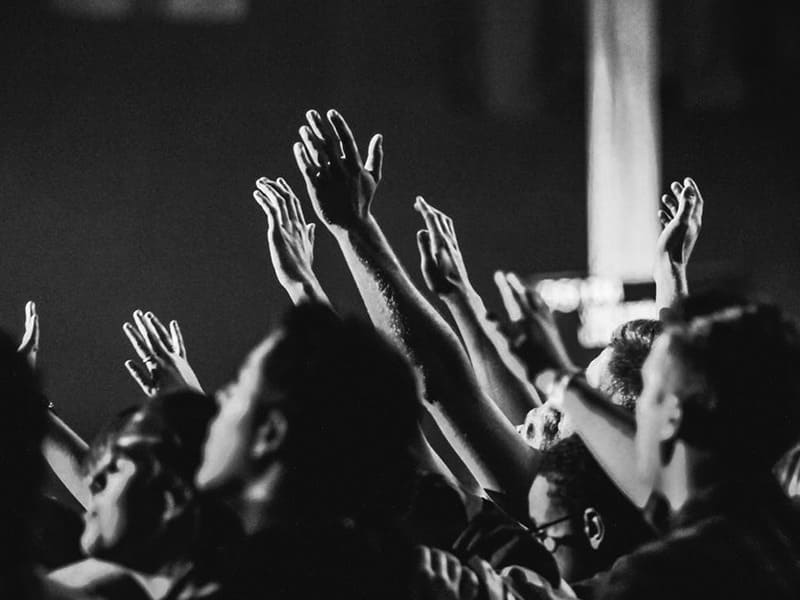A flock of Indonesian millennials celebrating the music of Javanese language singer Didi Kempot may have reflected a change in how young people today perceive the subject of ‘heartbreak'. So what exactly can we learn from this cultural shift?
Didi Kempot started his career back in 1984 all the way from Surakarta, Central Java, as a street musician playing campursari —a local subgenre that combines contemporary with traditional Javanese musical influences. For decades, this type of music had thrived in nonurban societies, especially those around East and Central Java. When Kempot sprang to fame in the 1990s, campursari had penetrated the popular music sphere and was beginning to be recognized in urban areas. That said, the subgenre was still somewhat perceived as ‘traditional' or even ‘parochial' for some. And after a while, Kempot struggled to compete with mainstream musicians even though he was considered a prolific figure in traditional music.
Yet in mid 2019, Kempot's songs such as "Banyu Langit" and "Cidro" suddenly went viral, resulting in an unexpected turn in his career. Since then, he has been trending on social media, attracting hundreds of thousands of YouTube subscribers, and headlined multiple music festivals across major cities attended mostly by the younger generation. At 53 years of age, Kempot has not only returned to the spotlight but has curiously become a catalyst for urban millennials listening to campursari in a time where most of them may have been more familiar with pop music. Here, we examine how Kempot has suddenly resonated with young people, as his songs challenge the dominant narratives of being ‘heartbroken'.
Heartbreak as Galau
When it comes to heartbreaks, the mainstream music landscape has typically delivered songs that evoke emotions of sadness, confusion, helplessness, desperation or angst. Within the local context, for instance, Indonesians may refer to bands that gained prominence in early 2000s such as Noah (formerly known as Peterpan) and Sheila on 7 for songs about heartbreak; whereas in early 2010s they may have turned to solo singers like Afghan and Raisa. Over time, these bands and musicians have similarly conveyed the message that heartbreaks are essentially painful through lyrics and music videos that promote themes such as breakups, unrequited love, or the difficulty to move on from someone. This type of depiction effectively resonates with the younger generation who tends to experience a state of emotional turmoil when it comes to being heartbroken, otherwise known as being galau.
Heartbreak as Celebratory and Empowering
The return of Didi Kempot to the spotlight has however led to an unprecedented change in how young people today respond to heartbreak songs through campursari as opposed to the likes of popular music genres. For one, campursari itself has traditionally been the kind of music that is more relevant amongst the older generation. And far from being the choice of music that would be played in malls, cafes or places where urban young people commonly go, campursari would normally be found on the streets or in musical performances organized to preserve local culture.
Yet interestingly, what is happening with Didi Kempot's revival paints an entirely different picture. His millennial fans now look up to him as their "Godfather of a Broken Heart" while they brand themselves as "Sad Boys" and "Sad Girls". At Didi Kempot's concerts, they are often seen singing and dancing along to his songs (despite the fact that not all of them speaks Javanese), demonstrating a rare view that sees young people collectively embracing and celebrating heartbreaks. By then, Didi Kempot's music has unexpectedly veered young people away from the idea that heartbreaks are ‘negative' towards one that alternatively sees it as a shared, celebratory, and empowering space.
Heartbreak as An Opportunity
What we can learn from Didi Kempot's sudden revival is the opportunities that artists and marketing professionals alike can bring by knowing how to reframe emotions in ways that no one else may have accomplished before. In this case, none of us may have foreseen that a middle-aged singer from Surakarta like Didi Kempot could possibly use campursari to subvert dominant conventions surrounding songs about heartbreak, which have long been sustained by mainstream musicians as a site for pain and sadness. Yet in reality Didi Kempot not only succeeded in making campursari more appealing to mainstream listeners but also in making it relevant to the younger generation because he was able to positively reframe what it means for people to be heartbroken. In semiotics terms, Didi Kempot is able to create a binary opposition of heartbreak as sadness into heartbreak as a celebration, which brought him into the spotlight because of how the meaning of heartbreak is uniquely reframed.
Didi Kempot's music is therefore the perfect testament to the unexpected ways through which cultural meanings and practices can be redefined. For brands to stay culturally relevant, this means that they need to be smarter in recognizing more emerging cultural phenomena and understanding the significance they will potentially bring to our society, however unlikely they may seem to be from the outset.


